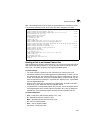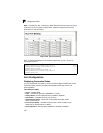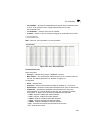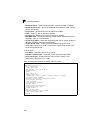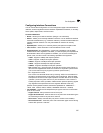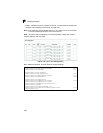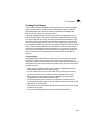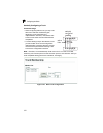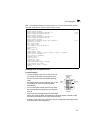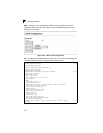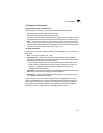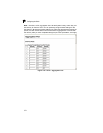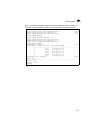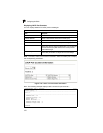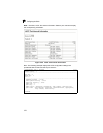
Port Configuration
3-71
3
CLI – This example creates trunk 2 with ports 1 and 2. Just connect these ports to
two static trunk ports on another switch to form a trunk.
Enabling LACP on Selected Ports
Command Usage
• To avoid creating a loop in the network, be sure
you enable LACP before connecting the ports,
and also disconnect the ports before disabling
LACP.
• If the target switch has also enabled LACP on the
connected ports, the trunk will be activated
automatically.
• A trunk formed with another switch using LACP
will automatically be assigned the next available
trunk ID.
• If more than four ports attached to the same target
switch have LACP enabled, the additional ports will be placed in standby mode,
and will only be enabled if one of the active links fails.
• All ports on both ends of an LACP trunk must be configured for full duplex, either
by forced mode or auto-negotiation.
Console(config)#interface port-channel 1 4-125
Console(config-if)#exit
Console(config)#interface ethernet 1/1 4-125
Console(config-if)#channel-group 1 4-140
Console(config-if)#exit
Console(config)#interface ethernet 1/2
Console(config-if)#channel-group 1
Console(config-if)#end
Console#show interfaces status port-channel 1 4-133
Information of Trunk 1
Basic information:
Port type: 1000T
Mac address: 00-00-E8-AA-AA-01
Configuration:
Name:
Port admin: Up
Speed-duplex: Auto
Capabilities: 10half, 10full, 100half, 100full, 1000full,
Flow control: Disabled
Port security: Disabled
Max MAC count: 0
Current status:
Created by: User
Link status: Down
Operation speed-duplex: 1000full
Flow control type: None
Member Ports: Eth1/1, Eth1/2,
Console#
active
links
}
}
dynamically
enabled
configured
members
backup
link



